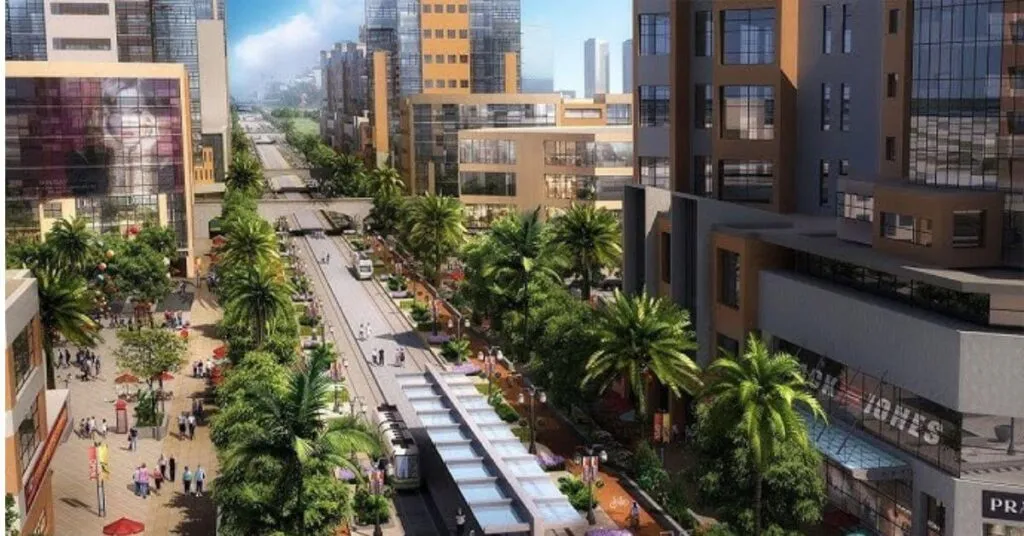Discover the future of urban development, from smart cities to green building practices. Learn how technology and innovative strategies are shaping our urban environments.
Urban development is evolving at an unprecedented pace. With the world’s population increasingly gravitating towards cities, the need for innovative and sustainable building practices has never been more critical. From smart homes to green buildings, the future of urban development is about creating spaces that are not only efficient but also environmentally friendly and socially inclusive.
Table of Contents
Understanding Urban Development
Urban development refers to the planning, construction, and management of cities and towns. It encompasses a wide range of activities, from residential buildings and commercial centers to infrastructure like roads and public transportation systems. The goal is to create livable, sustainable, and resilient urban environments that can accommodate growing populations while minimizing environmental impact.
Key Trends Shaping Urban Development
Smart Cities
Smart cities use technology to improve the quality of life for their residents. This includes everything from smart grids that optimize energy use to intelligent transportation systems that reduce traffic congestion. The integration of Internet of Things (IoT) devices allows for real-time data collection and analysis, enabling city planners to make more informed decisions.
Green Building Practices
Green building practices focus on reducing the environmental impact of construction. This includes using sustainable materials, optimizing energy efficiency, and reducing waste. Buildings that meet specific criteria can earn certifications like LEED (Leadership in Energy and Environmental Design), which signal their commitment to sustainability.
Mixed-Use Developments
Gone are the days when residential, commercial, and industrial zones were strictly separated. Mixed-use developments integrate these different types of spaces, creating vibrant, multifunctional neighborhoods. This approach encourages walking and biking, reduces the reliance on cars, and fosters a sense of community.
Modular Construction
Modular construction involves building sections of a structure off-site and then assembling them on-site. This method is faster, more efficient, and often more affordable than traditional construction techniques. It also allows for greater quality control and less waste.
Sustainable Urban Mobility
Transportation is a significant factor in urban development. Sustainable urban mobility focuses on reducing the carbon footprint of transportation systems. This includes promoting public transit, cycling, and walking while discouraging car use. Electric vehicles and ride-sharing services are also playing a crucial role in this transformation.
Challenges in Urban Development
While the future of urban development holds great promise, it also presents several challenges:
Environmental Impact
Urban development can have significant environmental consequences, from deforestation and loss of biodiversity to increased greenhouse gas emissions. Sustainable building practices are essential to mitigate these impacts.
Social Inclusion
Urban development must be inclusive, ensuring that all residents, regardless of income, have access to safe, affordable housing and essential services. This requires thoughtful planning and policies that prioritize social equity.
Regulatory Hurdles
Navigating the complex web of regulations and zoning laws can be a significant barrier to urban development. Working with experts, such as a construction law attorney in Utah, can help developers understand and comply with local regulations, ensuring their projects move forward smoothly.
The Role of Technology in Urban Development
Technology is a driving force behind many of the trends in urban development. From advanced building materials to AI-driven design tools, technological innovations are making it easier to create sustainable, efficient urban spaces.
Building Information Modeling (BIM)
BIM is a digital representation of a building’s physical and functional characteristics. It allows architects, engineers, and construction professionals to collaborate more effectively, improving the planning, design, and construction process.
Drones and Robotics
Drones and robotics are revolutionizing construction. Drones can conduct site surveys, monitor progress, and inspect hard-to-reach areas, while robots can automate repetitive tasks, improving efficiency and safety on construction sites.
Renewable Energy
The integration of renewable energy sources, such as solar and wind power, into urban development projects is crucial for reducing the environmental impact of cities. Advances in energy storage and grid management technologies are also helping to make renewable energy more viable.
The Internet of Things (IoT)
IoT devices are transforming urban spaces by enabling real-time data collection and analysis. This data can be used to optimize everything from energy use and waste management to traffic flow and public safety.
Conclusion
The future of urban development is exciting, filled with opportunities to create smarter, greener, and more inclusive cities. By embracing innovative building practices and leveraging the power of technology, we can build urban environments that are not only sustainable but also enhance the quality of life for their residents.

Pradeep Sharma is a author the mind behind Techjustify, where I craft insightful blogs on technology, digital tools, gaming, AI, and beyond. With years of experience in digital marketing and a passion for tech innovation, I aim to simplify complex topics for readers worldwide.
My mission is to empower individuals with practical knowledge and up-to-date insights, helping them make informed decisions in the ever-evolving digital landscape.




